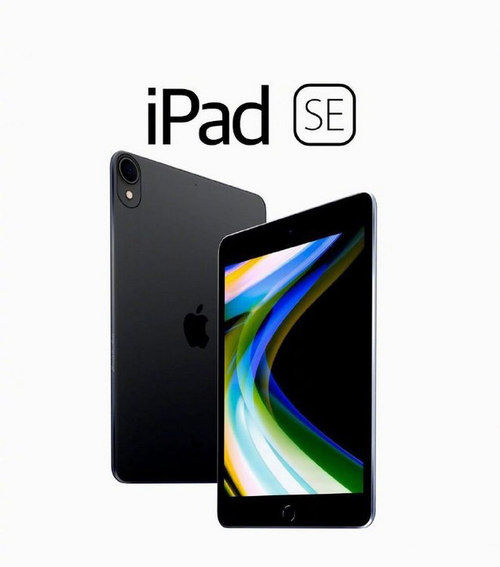UI绘制流程及原理
一丶View是如何被添加到屏幕窗口上的
将大象装进冰箱需要三步,创建自定义View也是分为三部曲。
源码分析,我们这里以Activity为例。
- 1 创建顶层的布局容器DecorView
- 2 在顶层布局中加载基础布局的ViewGroup
- 3 将ContentView添加到基础布局的FrameLayout中
一般开发中,我们给Activity设置布局的入口是setContentView()方法,进入setContentView()方法。
一·找到setContentView的实现
/**
* Set the activity content from a layout resource.The resource will be
* inflated, adding all top-level views to the activity.
*
* @param layoutResID Resource ID to be inflated.
*
* @see #setContentView(android.view.View)
* @see #setContentView(android.view.View, android.view.ViewGroup.LayoutParams)
*/
public void setContentView(@LayoutRes int layoutResID) {
getWindow().setContentView(layoutResID);
initWindowDecorActionBar();
}
这里面我们可以看到,实际调用的是getWindow()的setContenView方法,再来看看getWindow()方法,
/**
* Retrieve the current {@link android.view.Window} for the activity.
* This can be used to directly access parts of the Window API that
* are not available through Activity/Screen.
*
* @return Window The current window, or null if the activity is not
*visual.
*/
public Window getWindow() {
return mWindow;
}
返回的是一个Window对象。
/**
* Abstract base class for a top-level window look and behavior policy.An
* instance of this class should be used as the top-level view added to the
* window manager. It provides standard UI policies such as a background, title
* area, default key processing, etc.
*
* The only existing implementation of this abstract class is
* android.view.PhoneWindow, which you should instantiate when needing a
* Window.
*/
public abstract class Window {
这里Window是一个抽象类,从注释中我们可以看出,PhoneWindow是Window的唯一实例。进入PhoneWindow中去查看setContentView()方法。
@Override
public void setContentView(int layoutResID) {
...
if (mContentParent == null) {
installDecor();
} else if (!hasFeature(FEATURE_CONTENT_TRANSITIONS)) {
mContentParent.removeAllViews();
}
if (hasFeature(FEATURE_CONTENT_TRANSITIONS)) {
final Scene newScene = Scene.getSceneForLayout(mContentParent, layoutResID,
getContext());
transitionTo(newScene);
} else {
mLayoutInflater.inflate(layoutResID, mContentParent);
}
...
}
这个方法里面的主要做了两件事情 installDecor(),mLayoutInflater.inflate(layoutResID, mContentParent)(去解析当前出传入的 布局资源Id),接下来,我们主要去看下 installDecor()方法,是如何加载一个DecorView 。
二.了解installDecor()的加载过程
...
// This is the top-level view of the window, containing the window decor.
private DecorView mDecor;
...
private void installDecor() {
mForceDecorInstall = false;
if (mDecor == null) {
mDecor = generateDecor(-1);
mDecor.setDescendantFocusability(ViewGroup.FOCUS_AFTER_DESCENDANTS);
mDecor.setIsRootNamespace(true);
if (!mInvalidatePanelMenuPosted && mInvalidatePanelMenuFeatures != 0) {
mDecor.postOnAnimation(mInvalidatePanelMenuRunnable);
}
} else {
mDecor.setWindow(this);
}
if (mContentParent == null) {
mContentParent = generateLayout(mDecor);
// Set up decor part of UI to ignore fitsSystemWindows if appropriate.
mDecor.makeOptionalFitsSystemWindows();
...
}
}
}
}
通过installDecor()源码的阅读,主要是做了两件事。下面来看一下详细过程:
- 1.generateDecor() 创建一个DecorView;
- 2.generateLayout() 将layoutResources(基础布局)加载到DecorView。
1.通过generateDecor方法获取DecorView(顶层布局)
protected DecorView generateDecor(int featureId) {
...
return new DecorView(context, featureId, this, getAttributes());
}
再看下DecorView的具体实现。
public class DecorView extends FrameLayout implements RootViewSurfaceTaker, WindowCallbacks {
可以看到是DecorView 继承FrameLayout的容器,这就说明generateDecor()是获取一个布局容器。
2.generateLayout()方法是将layoutResource(基础布局)添加到DecorView
protected ViewGroup generateLayout(DecorView decor) {
// Apply data from current theme. 设置系统主题的不同样式和特性
TypedArray a = getWindowStyle();
...
if (mIsFloating) {
...
setFlags(FLAG_LAYOUT_IN_SCREEN|FLAG_LAYOUT_INSET_DECOR, flagsToUpdate);
}
...
if (a.getBoolean(R.styleable.Window_windowNoTitle, false)) {
...
requestFeature(FEATURE_NO_TITLE);
}
...
// Inflate the window decor. 解析decor
int layoutResource;
//定义布局的资源变量
int features = getLocalFeatures();
...
if ((features & (1 << FEATURE_ACTION_MODE_OVERLAY)) != 0) {
layoutResource = R.layout.screen_simple_overlay_action_mode;
} else {
// Embedded, so no decoration is needed.
layoutResource = R.layout.screen_simple;
}
...
mDecor.onResourcesLoaded(mLayoutInflater, layoutResource);
...
ViewGroup contentParent = (ViewGroup)findViewById(ID_ANDROID_CONTENT);
if (contentParent == null) {
throw new RuntimeException("Window couldn't find content container view");
}
...
return contentParent;
}
1.通过requestFeature()和setFlags()等方法设置系统主题的不同样式和特性。 2.解析窗口View步骤一: 1.这里对不同feature和flags就不做深究了。3 . 根据layoutResources (R.layout.screen_simple)上的布局ID:ID_ANDROID_CONTENT 获取到相应的 contentParent(实际上是一个R.layout.screen_simple 上的一个FrameLayout布局)并返回。
- 1 . 根据具体的fetures的不同获取到系统相应的 layoutResources。
- 2 . 获取完layoutResource 后,通过mDecor.onResourcesLoaded()方法去解析这个 layoutResources 。将解析获得的view加载到DecorView上。
步骤二: 【UI绘制流程及原理】1 . 先通过fetures获取相应的 layoutResources这里我们假定根据某些特性条件下获取到的是 layoutResource = R.layout.screen_simple;
2 . 执行onResourcesLoaded()方法,解析 layoutResources,加载到 DecorView上
先查看源码 onResourcesLoaded()源码
void onResourcesLoaded(LayoutInflater inflater, int layoutResource) {
...
final View root = inflater.inflate(layoutResource, null);
...
// Put it below the color views.
addView(root, 0, new ViewGroup.LayoutParams(MATCH_PARENT, MATCH_PARENT));
}
...
}
在onResourcesLoaded 方法中,他通过解析 layoutResource 创建了一个root对象。 该root对象例如为: R.layout.screen_simple(系统的xml)。通过addView方法将 root 对象加载到DecorView上。步骤三:
在onResourcesLoaded方法执行完毕后,回到 generateLayout()方法中接下来我们会获取到ViewGroup的对象 contentParent。那么这个contentParent是什么?
ViewGroup contentParent = (ViewGroup)findViewById(ID_ANDROID_CONTENT);
if (contentParent == null) {
throw new RuntimeException("Window couldn't find content container view");
}
首先通过查看ID_ANDROID_CONTENT 的注释, 我们可以看到这是系统主布局(我们这里假定获取的是R.layout.screen_simple)一定所具有的ID 。com.android.internal.R.id.content。
/**
* The ID that the main layout in the XML layout file should have.
*/
public static final int ID_ANDROID_CONTENT = com.android.internal.R.id.content;
我们查看screen_simple.xml,发现获取到这个contentParent ,实际上是 screen_simple.xml 上的FrameLayout 。
获取contentParent 并返回后,generateLayout()方法也就执行完毕。我们回到installDecor()方法中。三.加载setContentView中设置的布局
就此installDecor()的主要方法执行完毕。 以上我们可以理解是在这个过程是获取到DecorView,然后将根据不同特性获取到的系统的layoutResources加载到DecorView上。最后我们再根据ID_ANDROID_CONTENT 从layoutResources获取到contentParent 。它实际上是一个FrameLayout。
1.将setContentView中设置的布局加载到contentParent上
@Override
public void setContentView(int layoutResID) {
...
if (mContentParent == null) {
installDecor();
} else if (!hasFeature(FEATURE_CONTENT_TRANSITIONS)) {
mContentParent.removeAllViews();
}
if (hasFeature(FEATURE_CONTENT_TRANSITIONS)) {
final Scene newScene = Scene.getSceneForLayout(mContentParent, layoutResID,
getContext());
transitionTo(newScene);
} else {
mLayoutInflater.inflate(layoutResID, mContentParent);
}
...
}
最后通过:总结:
mLayoutInflater.inflate(layoutResID, mContentParent);
将在activity上设置的布局 layoutResID 加载到 contentParent上 也就是 FrameLayout上。至此,我们的整个View就加载并显示到屏幕上了。

文章图片
image.png
view是如何被添加到屏幕窗口上的?
1.首先系统会创建一个顶层布局容器DecorView。DecorView 是一个ViewGroup容器, 继承FrameLayout,是PhoneWindow对象持有的一个实例,他是所有应用程序的顶层View,在系统内部进行初始化。当DecorView 初始化完成后,系统会根据应用程序的顶层特性会加载一个基础容器,例如no_actionBar等,不同的主题加载的基础容器也不一样,但是无论什么样的的基础容器一定会有一个 android.R.di.content 的FrameLayout。开发者通过setContView设置的xml ,通过解析后就加载到了这个FrameLayout中。
推荐阅读
- JS中的各种宽高度定义及其应用
- 参保人员因患病来不及到指定的医疗机构就医,能否报销医疗费用()
- MybatisPlus|MybatisPlus LambdaQueryWrapper使用int默认值的坑及解决
- 【Hadoop踩雷】Mac下安装Hadoop3以及Java版本问题
- 经历了人生,才知道人生的艰难!及精彩!
- 罗塞塔石碑的意义(古埃及文字的起源,圣书体文字是如何被破解的)
- 以太坊中的计量单位及相互转换
- Spark|Spark 数据倾斜及其解决方案
- 2月读书感想及《战争风云》读后记
- 迅捷流程图制作软件的使用方法!














